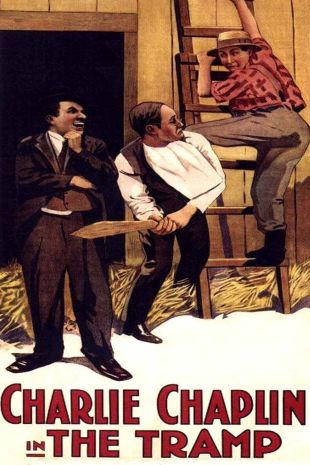
One of Chaplin's most famous comedies for the Essanay Film Manufacturing Company, and one which helped to sharply define the persona of the Tramp character, The Tramp finds Chaplin directing himself as a hobo, adrift on the highway of life, when fate takes hand in his affairs. He comes across a young woman (Edna Purviance, one of Chaplin's most frequent leading ladies in his early comedies) who is being beset by a group of other hoboes (one of whom is played by Bud Jamison, who would later become a regular in the Three Stooges shorts at Columbia in the 1930s). Charlie steps in and beats them all up, throwing them in a lake in the process. The young woman takes The Tramp back to her father's farm, where Charlie tries and fails miserably at performing even the most menial chores, much to the young woman's amusement. Much of the film is taken up with these farm gags, and Chaplin builds up his timing perfectly, so that even the simplest task seems absolutely beyond his reach. When the gang of hoboes whom Charlie has beaten off before try to break into the house, Charlie once again comes to the rescue, hoping secretly that the young woman will find a place for him in her heart. Alas, she is already engaged (her fiancé is played by future director Lloyd Bacon, who also does double duty here as one of the hoboes in an obvious economic move), and Charlie is left to pen a farewell note and drift out of her life and into his next adventure, as the character of the Tramp must. In his unrequited quest for romance, Chaplin here is working on one of his favorite themes: the Tramp, unlucky in love, and beset from all sides by adversity, who nevertheless manages to triumph in a variety of small yet significant ways, and who, although capable of minor acts of larceny, is essentially the moral center of the universe he inhabits. Chaplin's star would continue to rise in his other films of the period; he was on his way to becoming one of the highest paid performers in the film industry, exerting total creative control over his films.
